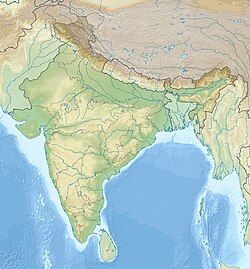It has been suggested that this article be merged into Nasik Caves. (Discuss) Proposed since November 2024. |
19°56′28″N 73°44′55″E / 19.941133°N 73.748669°E
| Nasik inscription of Ushavadata | |
|---|---|
 Cave No.10 "Nahapana Vihara" (circa 120 CE). 3D tour. The inscription is visible on the front porch of Cave No.10, over the entrance doors and windows, behind the columns. | |
| Material | Stone |
| Writing | Hybrid Sanskrit |
| Created | 120 CE |
| Period/culture | Western Satraps |
| Discovered | Nasik Caves |
| Present location | Nashik, Maharashtra, India |
Nasik Caves (India) | |
The Nasik inscription of Ushavadata is an inscription made in the Nasik Caves by Ushavadata, a son-in-law of the Western Satraps ruler Nahapana, in the years circa 120 CE. It is the earliest known instance of the usage of Sanskrit, although a rather hybrid form, in western India. It also documents the Indian tradition of dana (charity) to Buddhist monks and of building infrastructure to serve pilgrims and the general public by the 2nd-century CE.[1]
© MMXXIII Rich X Search. We shall prevail. All rights reserved. Rich X Search

